Some campers and outdoor enthusiasts don’t look forward to winter adventures due to problems with cold hands and feet. Spending time in such environments can leave the hands and feet numb and uncomfortable. Thankfully, hand and foot warmers are all consumers need to fight off the extreme cold. These products slip into pockets and shoes to deliver direct heat, keeping the user warm and comfortable outdoors.
This article dissects everything about hand and foot warmers and provides helpful information on what to look out for when stocking them in 2024. It will also drop tips on marketing these helpful products. But before that, here’s a brief look at the hand and foot warmer market’s stats.
Table of Contents
A brief look at the hand and foot warmer market in 2024
Hand and foot warmers: What are they, and why are outdoor enthusiasts looking for them?
4 areas to look at when choosing hand and foot warmers to sell
3 consumer groups to target and marketing angles businesses can take to reach them
Bottom line
A brief look at the hand and foot warmer market in 2024
The outlook for the hand and foot warmer market is very promising, with experts estimating its value at US $1.521 billion in 2024. Experts say the market will grow at a 5.30% annual rate from 2024 to 2031. This profitability and growth are driven by increasing demand during cold weather, sports events, and outdoor activities.
North America is the largest market in 2024, accounting for over 40% of the total revenue. Europe is the second-largest region (accounting for more than 30% of the global market), with experts predicting the region will register the fastest compound annual growth rate (CAGR) of 3.8% over the forecast period.
Hand and foot warmers: What are they, and why are outdoor enthusiasts looking for them?

Hand and foot warmers are small packets that produce heat, designed to keep the user’s extremities warm in cold weather. Outdoor enthusiasts seek hand and foot warmers because they provide a convenient and portable solution for combating the numbing effects of cold on fingers and toes.
The heat these products generate is crucial for maintaining dexterity and comfort during activities like skiing, snowboarding, hiking, camping, ice fishing, and other winter sports. Additionally, hand and foot warmers can help prevent frostbite and other cold-related injuries, making them an essential piece of gear for anyone venturing into chilly environments.
Although searches for hand warmers totaled 90,500 in May 2024, demand surged during the peak of winter. Google Ads data reports that hand warmers received as many as 365,000 searches monthly in December, January, and February. Similarly, foot warmers peaked at 74,000 searches during the winter months.
4 areas to look at when choosing hand and foot warmers to sell
1. Type
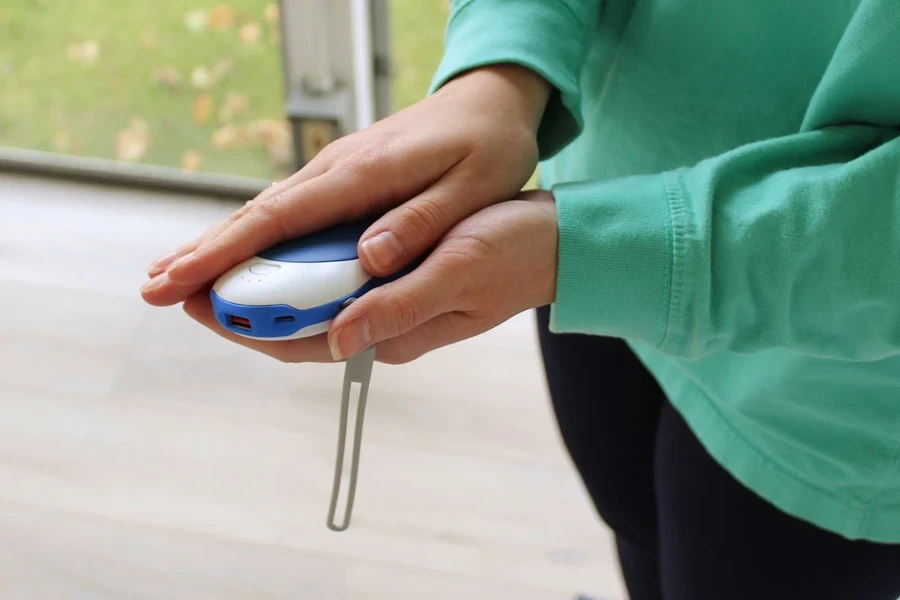
All hand and foot warmers share the common goal of providing warmth. However, they do it in different ways, some through chemical processes and others through electrical products. Most experts divide hand and foot warmers into three categories, as explained below.
Air-activated warmers
These contain a mixture of iron powder, salt, water, activated charcoal, and vermiculite. Once consumers expose them to air, the iron oxidizes (rusts) and generates enough heat to keep them warm. These warmers are usually disposable—all consumers have to do is open the pack, activate it by shaking, and enjoy a few hours of heat.
Reusable/refillable warmers
Instead of air activation, these warmers use a specific gel that consumers can heat in a microwave or boiling water. Reusable warmers are more convenient than most types, as users can enjoy a few hours of heat and reheat them when necessary without electricity. These warmers can also use refillable chemical solutions to generate safe heat.
Rechargeable warmers
These devices utilize a battery to power a heating element, usually made of a conductive material like carbon fiber or metal. When consumers switch them on, electricity flows through the element, heating it to a comfortable level. Most rechargeable warmers also have adjustable heat levels, making them great for people searching for a steady and prolonged heat source.
2. Size and fit
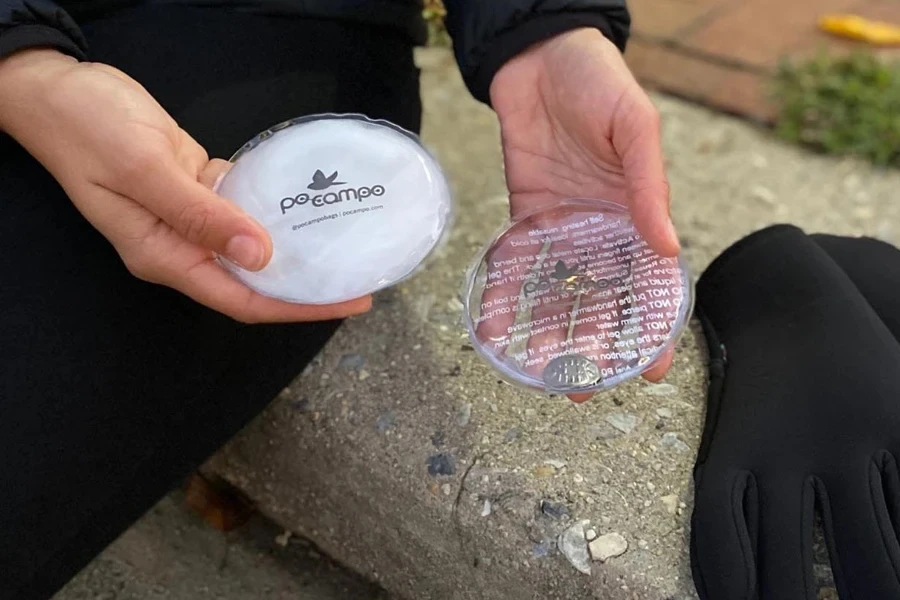
Hand and foot warmers aren’t one-size-fits-all. They come in various sizes and shapes to accommodate different needs and preferences. Some warmers are specifically designed for hands or feet, while others are more versatile and can accommodate both limbs.
Choosing the correct warmer size is crucial for sales. Warmers that are too small may not provide adequate coverage, while oversized ones can bunch up and create uncomfortable pressure points. Business buyers must consider the target consumers’s glove and shoe sizes to offer the best experience with hand and foot warmers.
| Size | Dimensions (inches) | Perfect for |
| Small hand warmers | 3 × 4 inches | Adults with smaller hands and children |
| Standard hand warmers | 4.5 × 2.5 inches | Adults with average-sized hands |
| Large hand warmers | 4.63 × 6.25 inches | Adults with larger hands or those wearing gloves or mittens |
| Standard foot warmers | 9 × 4 inches | Most adults with average shoe sizes |
| Large foot warmers | 12 × 5 inches | Adults with larger feet and thick socks or boots |
3. Heat temperature and duration
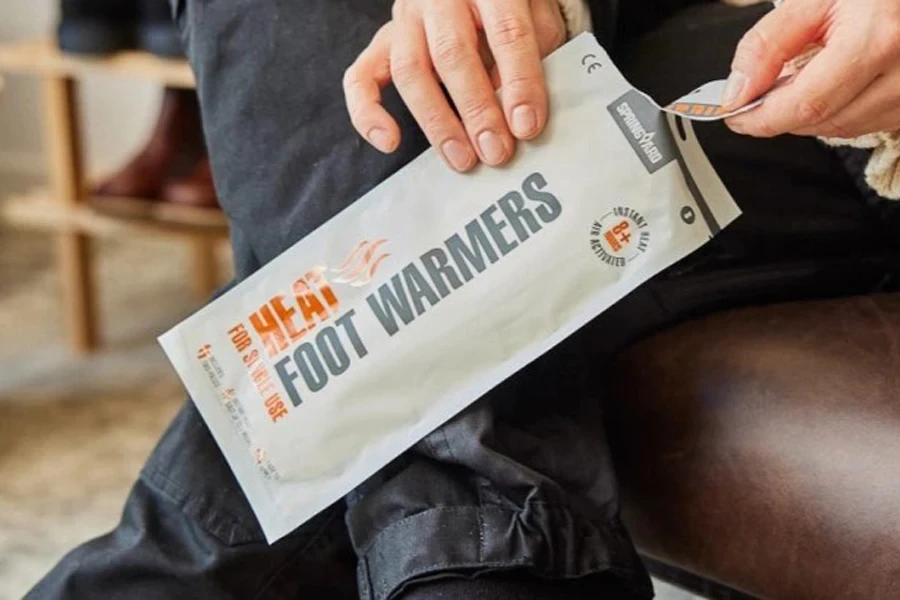
Air-activated (or disposable) warmers, popular for their convenience, typically provide 5 to 10 hours of 100°F (38°C) to 140°F (60°C) warmth. Some variants even offer extended heat duration, reaching up to 18 hours. However, the duration often depends on the warmer’s size and the ambient temperature. For example, smaller warmers in colder environments may have shorter heat durations.
Rechargeable warmers are more flexible than other types, as their runtime depends on the battery capacity and preferred heat setting. Since these models are rechargeable, consumers can quickly charge them when they run out of power. Regardless, most rechargeable warmers can last two to ten hours on a single charge, providing temperatures between 100°F (38°C) and 150°F (66°C).
If consumers are looking for extended warmth, refillable or reusable warmers are their go-to. These warmers typically reach up to 150°F (66°C) and can maintain this temperature for 12 hours or longer. However, it depends on the fuel type and the warmer’s efficiency.
4. Material

Hand and foot warmer materials determine their heat retention, comfort, and overall performance. Manufacturers carefully select materials to optimize these factors and cater to the diverse needs of outdoor enthusiasts. One key consideration they make here is thermal insulation.
Materials with excellent insulating properties, like fleece, wool, or specialized synthetic fabrics, help trap heat and prevent it from escaping, ensuring users enjoy their warmth longer. But if the focus is more on comfort, some warmers use soft and flexible materials like microplush or certain fleece types. These materials provide a pleasant tactile experience and are great for sensitive skin.
Sometimes, manufacturers may combine different materials to get the perfect balance of heat retention and comfort. For example, a warmer might have a thermal insulation layer sandwiched between two soft fabric layers, offering warmth and comfort in one bundle.
3 consumer groups to target and marketing angles businesses can take to reach them
Outdoor enthusiasts

Outdoor enthusiasts are one of the primary target audiences for hand and foot warmers. So, if businesses are targeting them, they can highlight their warmer’s ability to extend outdoor activities in winter. Pitch hand and foot warmers are the perfect product to make camping, hiking, skiing, fishing, or hunting in the cold more enjoyable.
Sports fans
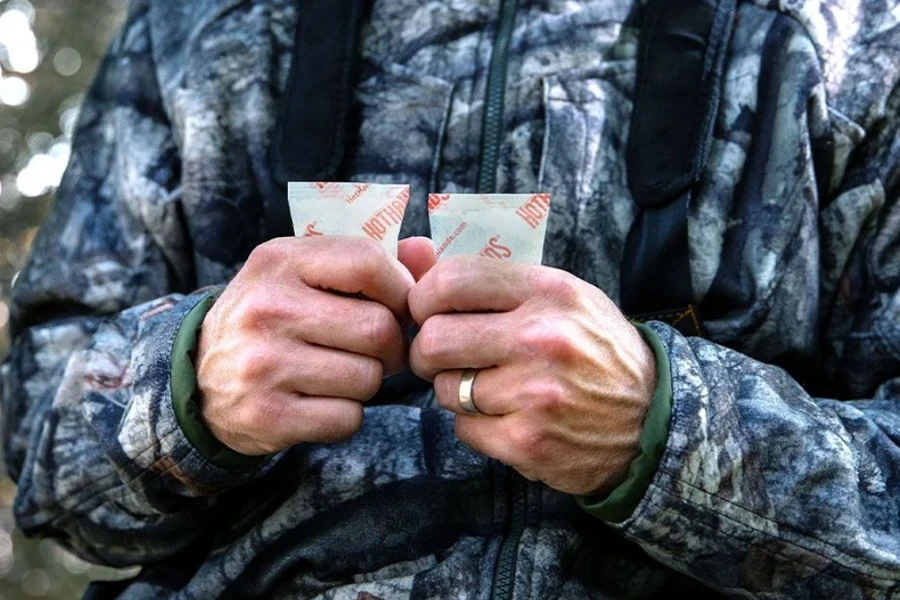
Sports fans also need hand and foot warmers, especially when cheering their favorite team on the sidelines. If this is the target audience, create product displays and descriptions that show how warmers can keep fans comfortable during cold-weather games, whether in stadiums or tailgating.
Commuters and urban dwellers
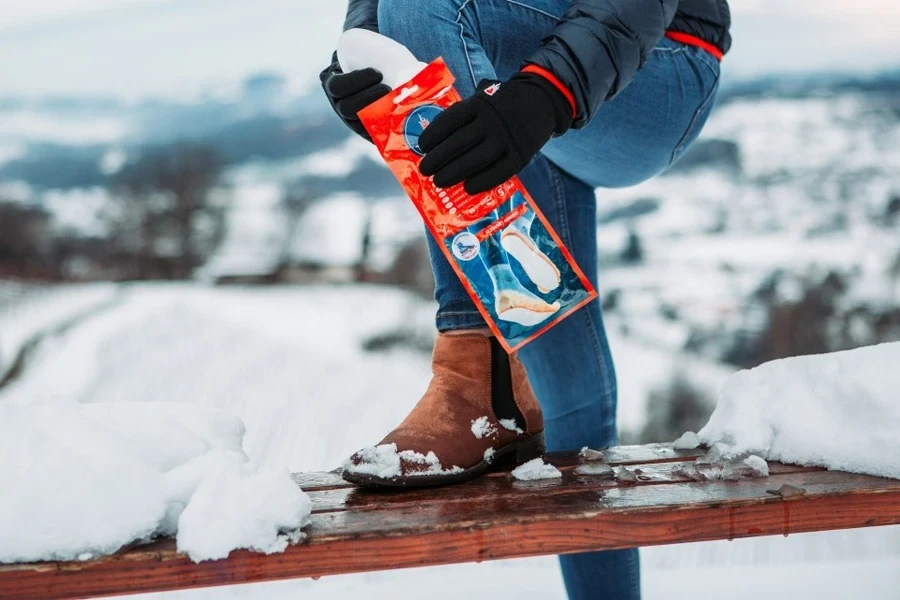
Help commuters and urban dwellers beat the winter chill and arrive warm and ready. When marketing to this target audience, focus on how comfortable warmers make cold commutes, walking to work, or waiting for public transportation. Since this target audience is always on the move, businesses can reach them by partnering with convenience stores near transit hubs, running ads on public transportation, and using social media ads.
Bottom line
In the end, hand and foot warmers’ value for winter adventurers goes far beyond their small size and convenient packaging. They offer a reliable boost of warmth, peace of mind, and the ability to enjoy the outdoors even when the temperatures plummet.
So, whether consumers are seasoned campers or just starting to explore winter activities, retailers shouldn’t underestimate the positive impact these little packets, reusable models, and rechargeable devices can have on sales. Subscribe to Alibaba Reads’ sports section for more insightful articles and essential industry updates.




